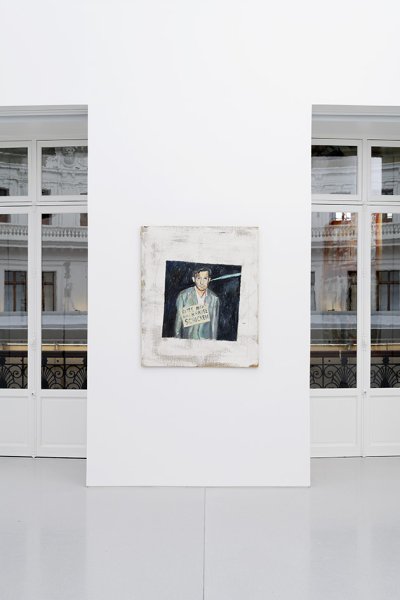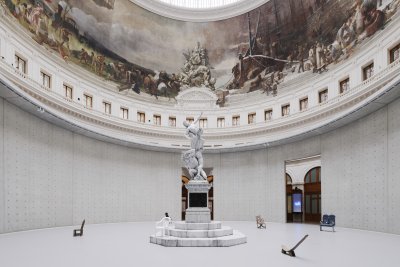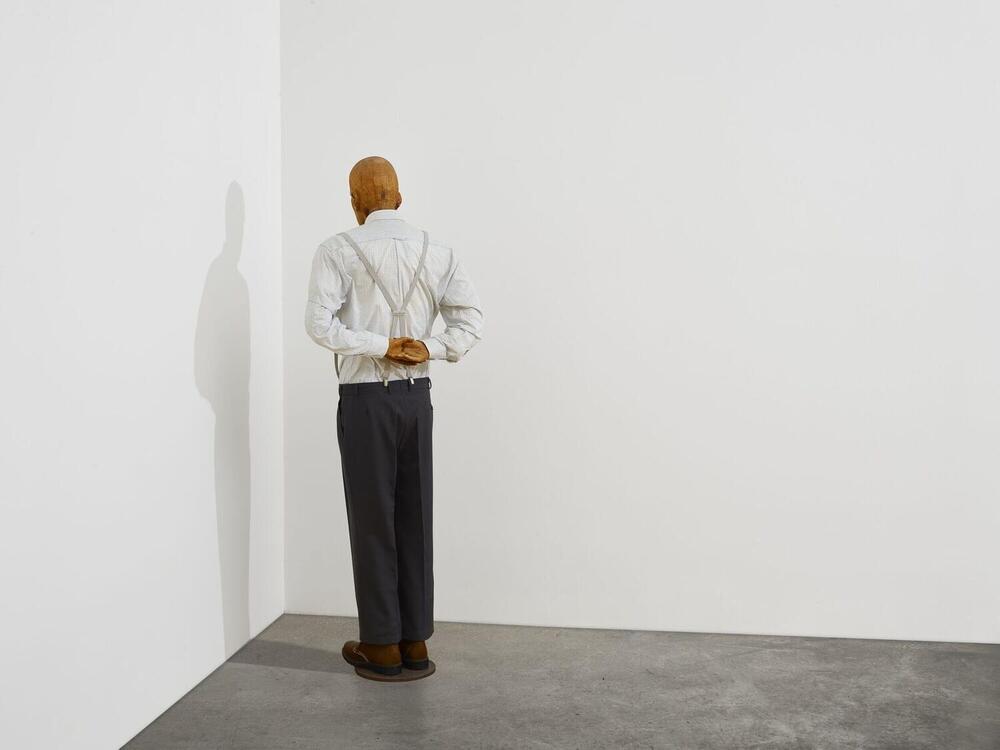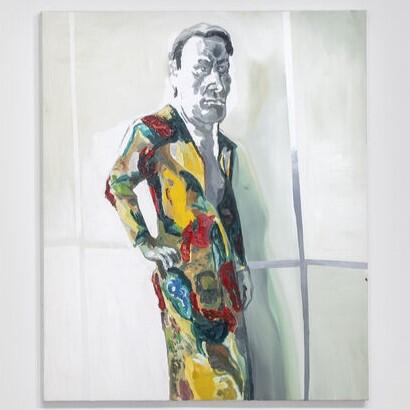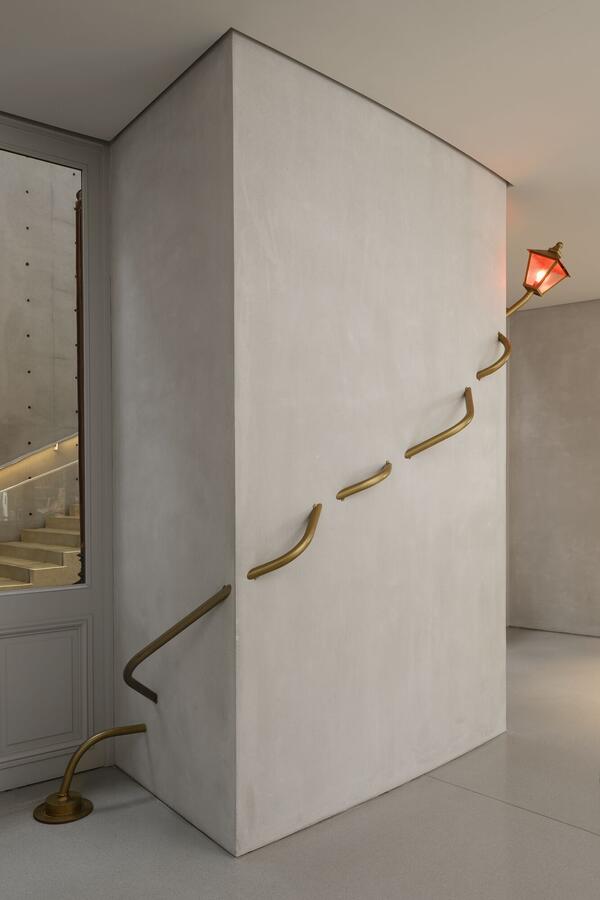Bitte nicht nach Hause schicken (Please Don’t Send Home)
Bitte nicht nach Hause Schicken (1983) is a self-portrait by the German painter Martin Kippenberger. The artist appears against a square, off-kilter background, himself emerging from a white background painted roughly on a coarse canvas. A rectangular border drawn in pencil around the portrait indicates that the source of this painting is a simple Polaroid, a snapshot from an instant camera; the original photograph was in fact revealed by the artist in 1987 in the work Korrekte Syntax.
Stooped over, arms dangling, with an expression of disconcertion on his face, Martin Kippenberger pictures himself in a shirt and jacket, a sign around his neck with the inscription in blue capital letters, “BITTE NICHT NACH HAUSE SCHICKEN,” which means “Please do not send home.” In doing so, the artist creates a mise en abyme of one of his own works, The Night Is Alright (1982), an installation that consists of a similar sign hanging on a hook and bearing the same message. Behind him, the deep black background, split by a blue line with the clarity of a lightning bolt, evokes the night or the dark interior of a club. In this motionless face-to-face encounter, the man's gaze escapes above the viewer.
This staging also echoes the photographs released by his captors of the former Nazi officer and powerful German industrialist Hanns Martin Schleyer who was held hostage for 43 days by the Rote Armee Fraktion (Red Army Faction) before being executed. An iconic wanderer, a pariah in a codified world, the artist carries with him the memory of recent tragedies and their victims, Jews, homosexuals, the handicapped, the deported, the exterminated… Martin Kippenberger disturbs, provokes, and sustains his legendary irreverence.
